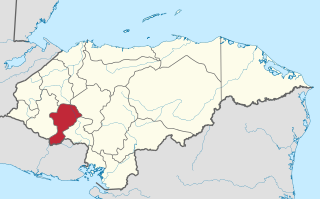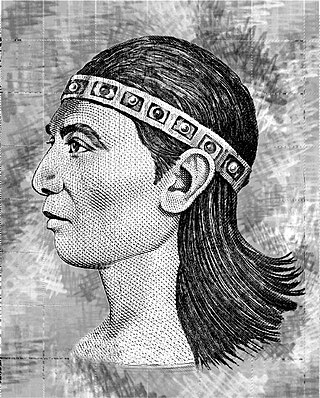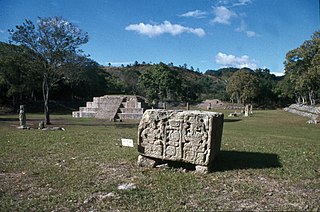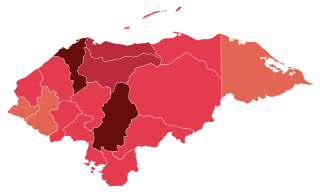| Dance | Researcher | Region | Sample |
|---|
| Arranca Terrones | Carlos Gómez
Rubén Ruíz | Municipio de Trinidad, departamento de Santa Bárbar | * Ballet Folklórico de Honduras Oro Lenca
* IORC
* Ballet Folklórico de Honduras Oro Lenca |
| El Barreño | Rafael Manzanares Aguilar | Aldea de Lodo Colorado, Santa Rosa de Copán, Copán | * Grupo Folklórico Zots |
| Danza Cacautare | Auxiliadora Narváez
Tania Pinto | Aldea de Cacahutare, municipio de Pespire, Choluteca | * Escuela Republica de Italia
* Instituto Renacimiento |
| La Cadena Guancapla | Wilberto Bonilla Ríos | Aldea Agua Blanca, municipio San Miguel Guancapla, departamento Intibuca | * |
| El Cascareño | Rubén Ruiz | Dulce Nombre de Copán, Copán | * Colegio Rafael Pineda Ponce
* Escuela Alba Nora |
| La Chunga (El Baile de María Jesús) | Wilberto Bonilla Ríos | Aldeas Nueva Experanza, Chiligatoro, Azacualpa, y otras, municipio La Esperanza, Intibucá | * Instituto Juventud Triniteca |
| La Colosuca | | | * Instituto Gregorio A Consuegra De Ajuterique
* ARTE-UNAH |
| La Correa | Rafael Manzanares Aguilar | Aldea de Cacaurtare, municipio de Pespire, Choluteca | * Azacualpa Danza La Correa
* Instituto San José, Progresso |
| El Corrido a las Chapias | David Flores
Luis Gustavo Catellón | Aldea de El Tunal, municipio de San Esteban, Olancho | * Corporación Folklórica Usula |
| El Cututeo Rápida | Rubén Ruíz | Municipio de Yoro, Yoro | * Brigadas de Amor Cristiano, Choluteca |
| El Destro | David Adolfo Flores Valladares
Luís Gustavo Castellón
Erika Cecilia Cuellar | Municipality of San Esteban, originated in municipality of Gualaco, department of Olancho | * Instituto de 5 de Noviembre Teupasenti |
| El Destro Ojos Negros | | Municipio de San Esteban, Olancho | * Grupo Folklórico Zots |
| El Destrocón | Luís Gustavo Castellón
Leny Padilla
Juan Pablo Valladares
José Ramón Borjas | Aldeas de las Flores y La Jagua en el municipio de San Esteban, Olancho | * Grupo Folklórico del Instituto Polivalente San Esteban
* Instituto Polivalente de San Esteban Olancho |
| El Distro (y de influencia indígena) | Wilberto Bonilla Ríos
Allan Mauricio Castro Vasquez | Aldea Las Delicias, municipio Santiago de Puringla, departamento La Paz | * Cuadro Nacional de Danzas Folklóricas de Honduras y El Grupo Lanceros |
| La Duyureña | Oscar Armando Guevara
Rosa Argentina Rueda
Daniela de Bustillo | Municipio de Duyure, Choluteca | * Escuela Normal Valle De Sula
* Ballet Folklórico Raíces Marcalinas |
| El Esquipuleño | David Adolfo Flores
Luís Gustavo Castellón
Erika Cecilia Cuellar | Caserío de Casas Viejas, municipio de Guanaca, Olancho | * El Esquipuleño
* Escuela Tomas Alverez Dolmo |
| La Farifumba | Wilberto Bonilla Ríos | Aldea Agua Blanca, municipio San Miguel Guancapla, departamento of Intibucá | * Ballet Folklórico de Honduras Oro Lenca |
| Frente a la Guatalera | Oscar Armando Guevara
Jesús Valladares | Sur de Honduras | * Instituto José Cecilio Del Valle, de Choluteca
* Inst. Miguel Mejia Ortega |
| La Guanesteña | Everth Zelaya | Catacamas, Olancho | * La Guanesteña
* La Guanesteña
* Cuadro de danzas de 3-1
* Ballet Folklórico de Honduras Oro Lenca |
| El Guapango Chorotega | Rafael Manzanares Aguilar | Linaca, Choluteca | * Ballet Folklórico de Honduras Oro Lenca (2017)
* Universidad Pedagógica Nacional Francisco Morazán (2014) |
| El Guapango del Río | Tania Pinto de Morán | Caserío de Jocomico, Choluteca | * Cuadro folkloSUL
* Arte UNAH |
| El Jutiquile | Rafael Manzanares Aguilar | Jutikile, Olancho, Olancho | * Danzas Folkloricas ARTE-UNAH |
| Los Lirios | Diógenes Orlando Álvarez Rodas
Nectalí Cáceres | Aldea los Lirios, municipio de Yoro, Yoro | * Grupo Folklorico Itzamná-Honduras
* Cuadro de el ITAF |
| Macheteado Musical | Wilberto Bonilla Ríos | Municipio de La Esperanza, Intibucá | * Inst. San José
* Leon Alvarado |
| El Palito Verde | Carlos Gómez
Rubén Ruiz | Trinidad, Departamento de Santa Bárbara | * Ballet Folklórico de Honduras Oro Lenca
* Cuadro Municipal de Danzas La Unión Olancho |
| El Palito Verde de Guancapla | Wilberto Bonilla Ríos | Aldea Agua Blanca, municipio San Miguel Guancapla, departamento of Intibucá | * Ballet Folklórico de Honduras Oro Lenca
* Jesus Aguilar Paz |
| Las Peinitas | Wilberto Bonilla Ríos
Marcio Suazo Izaguirre | Marcala, Departamento de La Paz | * Inst. San José
* Las Peinitas
* Arte-UNAH |
| La Picoteña | Tania Pinto de Morán
Sara Emilia de Mendoza de Ordóñez | El Pedrero, municipio Pavana, Choluteca | * Ballet Folklórico de Honduras Oro Lenca
* Escuela Bilingüe Honduras
* Inst Rafael Pineda Ponce |
| La Piunga | David Adolfo Flores Valladares
Antonio Bonilla
Colaboración de:
Raúl Alvarado, Justiniano Reyes
Walter Troches. | Aldea El Ocotillo, municipio de Aranda, Santa Bárbara, y aldeas aledañas | * |
| La Polca Corrida (o Brisas del aire) | Tania Pinto de Morán | Aldea de San Ramón, caserío de Linaca, Departamento de Choluteca | * Cuadro Nacional de Danzas Folklóricas de Honduras
* Representantes de la Zona 2 en el IV Multifestival Diocesano 2011
* Ballet Folklórico de Honduras Oro Lenca |
| La Polca de la Enea | Oscar Guevara | Aldea La Enea, municipio de Morolica, Choluteca | * UNAH
* Escuela República de Italia |
| Polca Los Manguitos | Wilberto Bonilla Ríos | La Esperanza, Intibucá | * Instituto Jesus Aguilar Paz de Tegucigalpa
* Iinstituto Manuel Pagan Lozano
* Instituto Jesus Aguilar Paz de Tegucigalpa
* Inst. Gabino Vásquez Argueta |
| Polca de María Luisa | Ramón Fúnez
Alba Hernández
Leonor Galeano | Aldea de Las Quebradas, municipio de Talanga, Francisco Morazán | * Instituto Dr. Jorge Fidel Durón
* inst. Fidel duron |
| La Polca Marcada | David Adolfo Flores
Luís Castellón
Erica Cecilia Cuellar | Aldea Las Limas y La Venta, municipio de San Esteben, o municipio de Guanaco | * Inst. Jesus Aguilar Paz
* Cuadro De Danzas Arte UNAH |
| Polca de La Novia | Oscar Armando Molina, | Aldea del Espinal, municipio de Pespire, Choluteca | * |
| Polca del Plato | Luis Gustavo Castellón
Leny Padilla
Juan Pablo Valladares | Municipio de San Esteban, Olancho | * Polca del Plato |
| La Polka de Rosa | Tania Pinto de Moran
José Armando
María del Pilar
Roberto Antonio Moran | Jocomico, Palo Herrado, Copal, Santa Elena y demás caseríos aledaños, Choluteca | * ASOHA (YUM KAAX)
* Representantes de la zona 1 en el Multi Diocesano 2011 de la Parroquia Santisima Trinidad de Chamelecon |
| La Polca Sanjuaneña | Tania Pinto de Morán | Aldea de San Juan Bautista, municipio de Pespire, Choluteca | * Escuela La Democracia de La Libertad Comayagua
* [Inst. Presentación Centeno Inst. Jorge Fidel Duron de San Francisco de Yojoa, Cortes] |
| La Polka Sislaba | | | * Cuadro de Danzas Itzayana Tocoa Colon |
| Raíces de los Castellanos o Corrido de las Fichas | David Adolfo Flores Valladares
Maria del Carmen Contreras | Ciudad del Progreso, Departamento de Yoro | * INBAC (2015)
* Grupo Folklórico Danzantes
* Inst. Jorge Fidel Duron |
| La Rana | Ricardo Rodriguez | Pueblo de Linaca, Choluteca | * Instituto Matilde Córdova de Suazo
* Instituto Jose Trinidad Reyes
* Escuela Aurora |
| El Revuelto | Rafael Manzanares Aguilar | Aldea de San Martín, departamento de Chuleteca | * Grupo Folklorico Azacualpa |
| El Suspiro | David Flores
Gustavo Castellón | Caserío de Tonjagua, aldea Las Limas, municipio de San Esteban, Olancho | * la Escuela Miguel Paz Barahona de San Francisco Yojoa |
| La Tronconera | Marvin Moreno
Jairo Exau Alvarez
Thania Pinto de Moran | Aldea la Galera, municipio del Corpus, departamento de Choluteca | * Danza la Tronconera Instituto Cardenal Oscar Andres
* ARTE-UNAH |
| Vals destro (o El Palito Verde de Intibucá) | Wilberto Bonilla Ríos | Aldea Nueva Esperanza, municipio La Esperanza, departamento Intibucá | * Instituto 5 de noviembre Teupasenti |
| El Xungui-Xungui | Alan Castro | municipality Opatoro, department La Paz | * Jesus Aguilar Paz |
| El Zapateado (Dance of the Machetes) | Rafael Manzanares Aguilar | Aldea de San Martín, Choluteca | * Cuadro de Danza Instituto Tecnologico Santo Tomas
* Competencia Nacional
* Inst. Perla del Ulúa, Progresso |
| El Zapateado Paceño [27] | Wilberto Bonilla Ríos | Municipio de San Juan, La Paz | * Ballet Folklórico de Honduras Oro Lenca (Virginia)
* Ballet Folklórico de Honduras Oro Lenca (Parque, La Esperanza)
* Instituto San José de El Progreso, Yoro |
| La Zarandita | Ricardo Felipe Rodríguez
Sara Emelia Mendoza de Ordóñez | Aldea La Picota, municipio Choluteca, departamento Coluteca | * Academia Interamericano Meridon
* Grupo Proyeccion Folclorica Celaque |


















